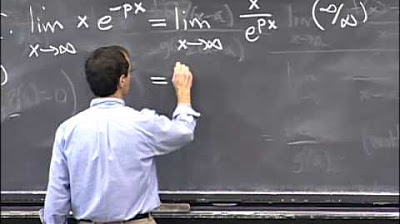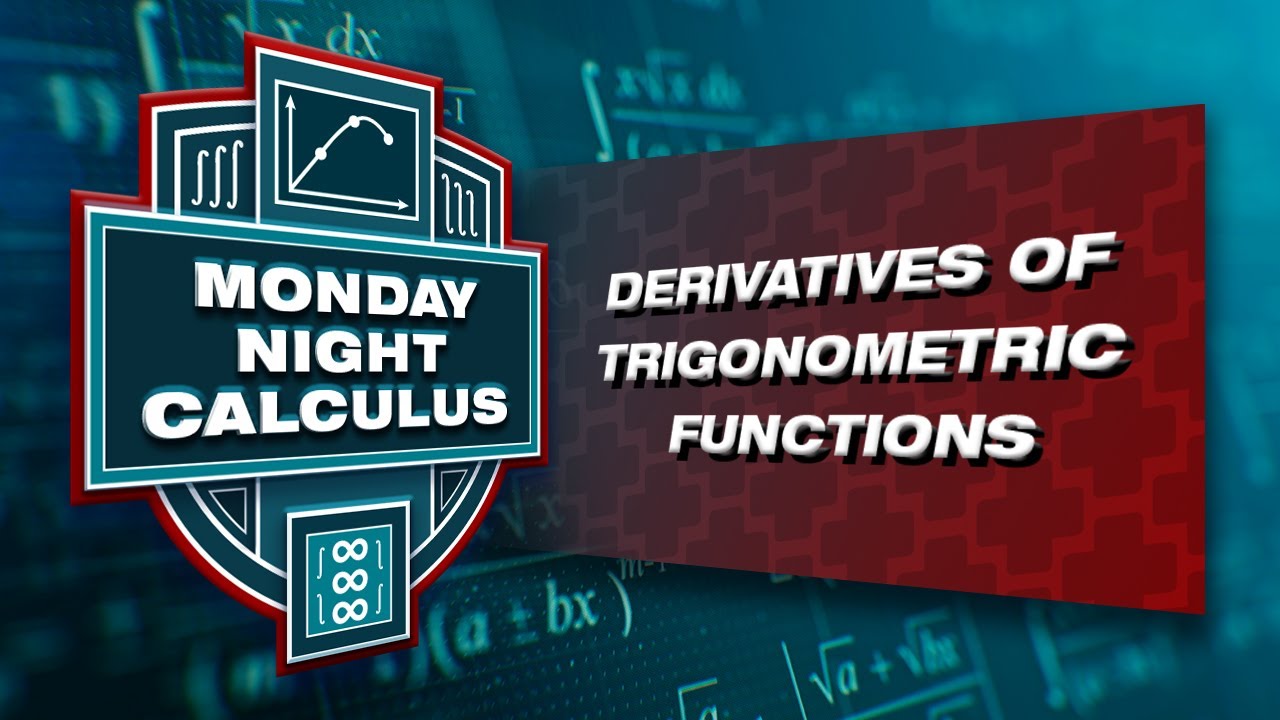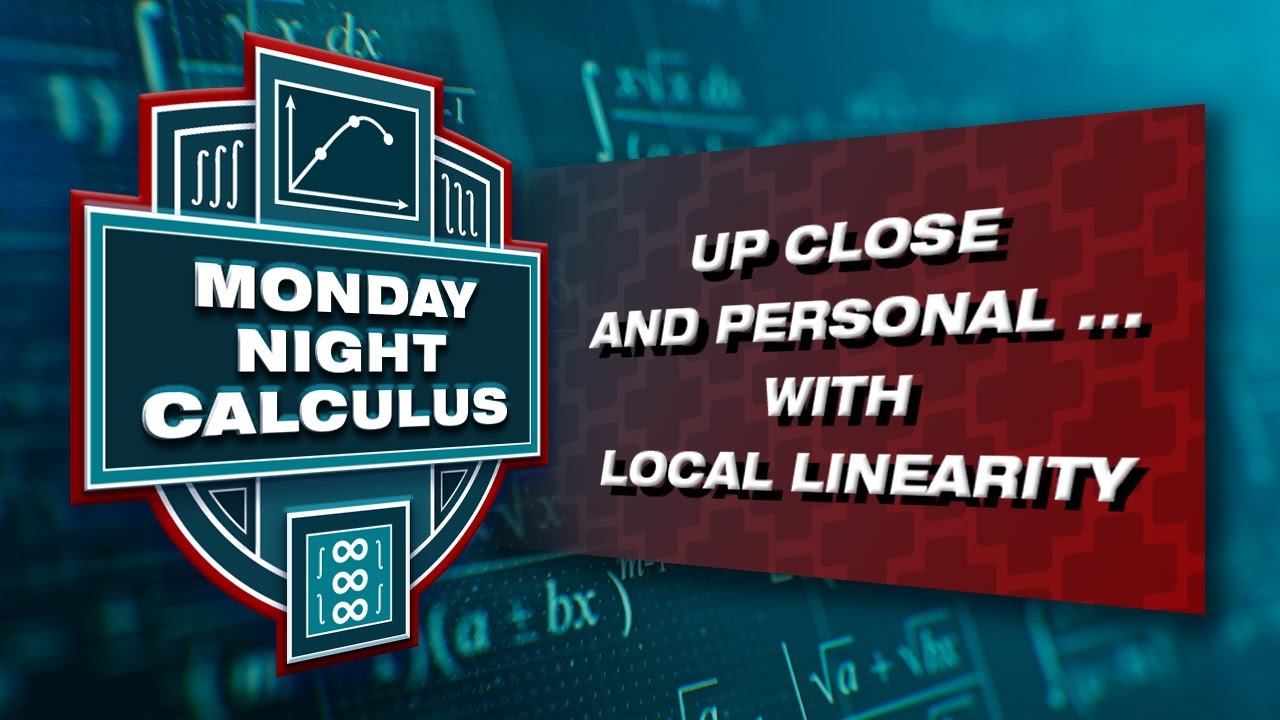Monday Night Calculus: Local Linearity and L’Hospital’s Rule
TLDRIn this Monday Night Calculus session, Steve and Tom from Texas Instruments delve into the concept of local linearity and L'Hopital's Rule. They discuss how to handle indeterminate forms, such as 0/0 and ∞/∞, using L'Hopital's Rule and the importance of verifying conditions before application. The session includes interactive examples, graphical illustrations, and a discussion on the use of technology in exploring and confirming calculus problems. The presenters also emphasize the significance of simplifying expressions after applying L'Hopital's Rule and the educational value of visualizing limits and derivatives using graphing calculators.
Takeaways
- 📚 The session focused on exploring the concept of local linearity and L'Hopital's Rule in calculus.
- 🤔 L'Hopital's Rule is a method for evaluating limits of the form 0/0 and ∞/∞ by considering the derivatives of the numerator and denominator functions.
- 📈 The importance of verifying the conditions for L'Hopital's Rule before applying it was emphasized, as well as the need for proper simplification after applying the rule.
- 🌐 The session encouraged participants to engage by asking questions, posting comments, and sharing their locations.
- 👨🏫 The presenters acknowledged teachers and students, especially from Strathcona High School in Edmonton, Canada, and encouraged their participation.
- 💻 The use of technology, specifically graphing calculators, was discussed as a tool to visualize and support the understanding of calculus concepts.
- 📊 The session included a graphical representation of functions to illustrate the concept of local linearity and the behavior of functions near certain points.
- 🎯 Specific examples and problems were provided to demonstrate the application of L'Hopital's Rule and to engage the audience in solving them.
- 🚫 The session addressed common mistakes made by students when applying L'Hopital's Rule, such as incorrect verification and misuse of the quotient rule.
- 📝 The presenters encouraged note-taking and active participation in the session, highlighting the value of engaging with the material.
- 🔄 The concept of indeterminate forms other than 0/0 and ∞/∞ was briefly discussed, with a focus on how to handle such forms by rearranging them into known forms.
Q & A
What is the main topic of discussion in the transcript?
-The main topic of discussion in the transcript is L'Hopital's Rule and its application in solving calculus problems involving indeterminate forms, particularly 0/0 and infinity/infinity.
What is L'Hopital's Rule, and what types of indeterminate forms does it address?
-L'Hopital's Rule is a method in calculus for evaluating limits of indeterminate forms, specifically 0/0 and infinity/infinity. It states that if the limit of the ratio of two functions results in an indeterminate form, then the limit of the ratio of their derivatives can be used to find the original limit.
How does the speaker introduce the concept of L'Hopital's Rule in the transcript?
-The speaker introduces L'Hopital's Rule by discussing the limitations of direct substitution in solving limits with indeterminate forms and then presents L'Hopital's Rule as a solution to handle such cases.
What is the significance of the function f(x) = log(x)/(x-1) in the discussion?
-The function f(x) = log(x)/(x-1) is used as an example to illustrate the application of L'Hopital's Rule. The speaker attempts to find the limit as x approaches 1, where direct substitution results in an indeterminate form, and then applies L'Hopital's Rule to evaluate the limit.
How does the speaker address the issue of verifying L'Hopital's Rule on the AP Calculus exam?
-The speaker notes that on the AP Calculus exam, students need to verify the indeterminate form before applying L'Hopital's Rule. They must show that the limit of the numerator and denominator both approach 0 or infinity, and that the equal sign should not be used in the verification process.
What is the role of technology in the discussion, and how does the speaker encourage its use?
-The speaker encourages the use of technology, specifically graphing calculators, to explore possible solutions to calculus problems before solving them analytically. They suggest using technology to visualize functions and their limits, reinforcing the understanding of the concepts discussed.
What is the significance of the example involving e^x and x^2 in the discussion?
-The example involving e^x and x^2 is used to demonstrate the application of L'Hopital's Rule in cases where the limit results in an indeterminate form after the first application. The speaker shows that applying L'Hopital's Rule multiple times can lead to a determinate limit.
How does the speaker emphasize the importance of simplifying after applying L'Hopital's Rule?
-The speaker emphasizes the importance of simplifying after applying L'Hopital's Rule by providing an example where not simplifying leads to an incorrect conclusion. They stress that simplification is necessary to avoid further applications of L'Hopital's Rule in cases where it is not needed.
What is the purpose of the bonus questions mentioned at the end of the transcript?
-The bonus questions mentioned at the end of the transcript serve as additional practice for participants to apply the concepts discussed during the session, particularly L'Hopital's Rule and handling indeterminate forms.
What is the significance of the discussion about the limit as x approaches infinity of e^x divided by x^100?
-The discussion about the limit as x approaches infinity of e^x divided by x^100 is used to illustrate the concept that exponential functions grow much faster than power functions, leading to the conclusion that the limit in this case approaches zero.
Outlines
🎓 Introduction to Monday Night Calculus
The video begins with an introduction to the Monday Night Calculus series, hosted by Curtis Brown from Texas Instruments. He welcomes guests Steve Kakoska and Tom Dick, setting the stage for an engaging and informative session. Curtis encourages audience interaction, asking viewers to share their locations and to actively participate by asking questions. The session aims to explore interesting concepts in calculus, with Steve and Tom presenting a blend of mathematical discussion and technological applications.
📚 Discussing L'Hopital's Rule and Local Linearity
Steve Kakoska delves into the topic of L'Hopital's Rule, explaining its necessity for handling indeterminate forms such as 0/0 and ∞/∞. He provides a clear explanation of when and how to apply L'Hopital's Rule, emphasizing the importance of verifying the conditions before using it. The discussion also touches on the concept of local linearity, with Tom highlighting the use of technology to explore this further. The session encourages teachers and students to engage with the content and apply the concepts both theoretically and practically.
📈 Analyzing Limits and Graphical Representation
The conversation shifts to exploring limits of functions, particularly focusing on the behavior of the log function and polynomials as x approaches infinity. Steve illustrates the use of L'Hopital's Rule in analyzing these limits, emphasizing the need for simplification after applying the rule. Tom introduces the idea of using graphical representations to complement analytical solutions, showcasing the power of technology in visualizing mathematical concepts. The discussion also touches on the importance of understanding the behavior of functions near their discontinuities.
🤔 Problem Solving with L'Hopital's Rule
Steve presents a series of problems involving L'Hopital's Rule, guiding the audience through the process of identifying indeterminate forms and applying the rule to find the limits. He also highlights the potential pitfalls of not simplifying expressions after using L'Hopital's Rule and the importance of verifying the rule's applicability. The session encourages participants to engage with the problems and offers insights into solving them, fostering a deeper understanding of calculus concepts.
🌟 Exponential Functions vs Power Functions
The discussion moves on to comparing the growth rates of exponential and power functions, using limits as x approaches infinity to illustrate the differences. Steve and Tom explore the behavior of these functions through examples and encourage participants to think critically about their outcomes. The session also touches on the general conclusion that exponential functions grow much faster than power functions, providing a valuable insight for students and teachers alike.
📝 Additional Indeterminate Forms and their Solutions
Steve expands the conversation to include other indeterminate forms beyond 0/0 and ∞/∞, such as 0 × ∞ and ∞ - ∞. He explains the basic approach to solving these forms by rearranging the expression into a more familiar indeterminate form. The session also addresses the potential appearance of these forms on the AP Calculus exam, providing guidance on how to handle them effectively.
🤓 Problem Set Analysis and Participant Engagement
Steve and Tom analyze problems from the assigned problem set, demonstrating the application of L'Hopital's Rule and other calculus concepts. They also encourage participants to graph functions to gain a better understanding of the limits and the behavior of functions. The session concludes with a discussion on the tangent line's equation and its relation to the function's derivative, fostering active participation and deeper engagement with the material.
🎨 Geometric Interpretation of L'Hopital's Rule
Tom provides a geometric interpretation of L'Hopital's Rule, using the ratio of slopes and y-values of two lines with a common x-intercept to illustrate the concept. He then transitions to using graphing calculators to further explore the rule's justification and the local linearity of functions. The session emphasizes the visual aspect of calculus, providing a robust way to understand the behavior of functions near their discontinuities.
🖥️ Technology in Calculus Education
The session concludes with a discussion on the use of technology in teaching calculus, particularly the power of graphing calculators in visualizing and understanding mathematical concepts. Tom and Steve share their experiences and insights on how technology can enhance learning and problem-solving in calculus. They also address the challenges of representing irrational numbers and the importance of participant engagement in the learning process.
🙌 Participant Interaction and Future Sessions
Curtis wraps up the session by thanking Steve and Tom for their contributions and encourages participants to continue engaging with the content. He reminds teachers to involve their students in future sessions and highlights the value of asking questions and interacting with the presenters. Curtis also announces the date for the next Monday Night Calculus session, inviting everyone to join for more calculus exploration and discussion.
Mindmap
Keywords
💡Calculus
💡l'Hopital's Rule
💡Local Linearity
💡Derivative
💡Limit
💡Indeterminate Form
💡Tangent Line
💡Graphing Calculator
💡Trigonometric Functions
💡Removable Discontinuity
Highlights
Introduction to Monday Night Calculus with Steve Kakoska and Tom Dick, hosted by Curtis Brown from Texas Instruments.
Discussion on the importance of posting chat interactions and asking questions during the session.
Acknowledgment of AP Calculus teachers and students, especially from Strathcona High School in Edmonton, Canada.
Explanation of how to access previous Monday Night Calculus videos and materials on the TI bulletin board.
Topic introduction - Local Linearity and L'Hopital's Rule, with a focus on solving indeterminate forms like 0/0 and ∞/∞.
Illustration of the problem with direct substitution in limits for the function f(x) = log(x)/(x-1) near x=1.
Discussion on alternative solution techniques for handling zero over zero and infinity over infinity limits.
Introduction to L'Hopital's Rule as a method for dealing with indeterminate forms in limits.
Explanation of the conditions required for the application of L'Hopital's Rule and its validity for one-sided limits and limits at infinity.
Special case proof of L'Hopital's Rule using the concept of the derivative and its continuity.
Demonstration of the application of L'Hopital's Rule on the example of log(x)/(x-1) and the importance of verifying the conditions first.
Discussion on the use of technology to explore, solve, and confirm results in calculus problems.
Illustration of the concept of local linearity using the tangent line approximation for differentiable functions.
Presentation of a classic problem involving the limit of (e^x - e^(-x))/x as x approaches 0, emphasizing the importance of simplification after applying L'Hopital's Rule.
Discussion on other indeterminate forms beyond 0/0 and ∞/∞, such as 0 times ∞ and ∞ - ∞, and the general approach to solving them.
Presentation of a problem involving improper integrals and the use of partial fractions, highlighting the importance of rearranging terms to known indeterminate forms.
Demonstration of the geometric interpretation of L'Hopital's Rule using the ratio of slopes and y-values of tangent lines at a common x-intercept.
Discussion on the challenges of graphing functions with irrational discontinuities and the use of trigonometric windows for better visualization.
Conclusion and reminder for participants about the upcoming Monday Night Calculus session on October 26th.
Transcripts
Browse More Related Video

Lec 35 | MIT 18.01 Single Variable Calculus, Fall 2007

Monday Night Calculus: Derivatives of Trigonometric Functions

Introduction to l'Hôpital's rule | Derivative applications | Differential Calculus | Khan Academy

Fall 2023 MNC: Up close and personal with differentiability and local linearity

L'hopital's rule

Monday Night Calculus: Function Analysis With Graphical Stems
5.0 / 5 (0 votes)
Thanks for rating: